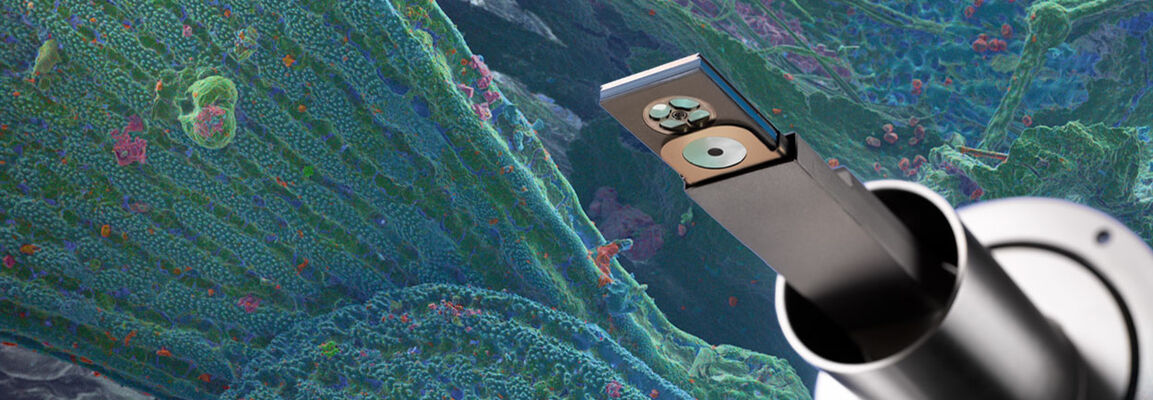

Fast, Accurate and Precise Quantification Results Using an Annular Silicon Drift Detector: Bruker’s XFlash FlatQUAD
Energy Dispersive X-ray Spectroscopy in the Scanning Electron Microscope
Silicon Drift Detectors (SDDs) have become standard instrumentation for energy dispersive X-ray spectroscopy (EDS) using scanning electron microscopes (SEMs) and electron probe microanalyzers (EPMAs). The annular SDD XFlash® FlatQUAD is a unique SDD that is inserted between the pole piece and sample, instead of in an inclined port of the SEM. Thus, it has a large solid angle (1.1 sr), which is typically 100 times larger than the solid angle available using a 10 mm² SDD in a conventional setup. X-rays are collected from four separate detector segments and signals are processed in parallel by four detection units, allowing high count rates at low dead-time, leading to a maximum output count rate of more than 2,400,000 counts per second (cps) for high speed mapping and fast spectra collection. In addition, such a geometry minimizes shadow effects and is therefore ideally suited for the analysis of topographically complex, three-dimensional and beam sensitive samples. Even at the lowest beam current (<10 pA), uncoated, beam sensitive and non-conductive samples can be investigated under high vacuum in natural state.
In this webinar we will present examples using the XFlash® FlatQUAD for fast and reliable quantification results, including both standard based and standard free quantification methods. The results will be compared to known published results using other analytical techniques. Furthermore, examples of high-speed mapping will be presented, such as beam sensitive samples with high topography or how a complete thin section can be mapped in minutes.
Who Should Attend?
- Scientist from all analytical fields interested in EDS technology for SEM
- Researchers working with topographically complex, three-dimensional and beam sensitive samples
Speakers
Max Patzschke
Application Scientist EDS, Bruker Nano Analytics
Dr. Andrew Menzies
Senior Application Scientist - Geology and Mining, Bruker Nano Analytics
Watch this Webinar On-Demand
Please enter your details below to gain on-demand access to this webinar.


